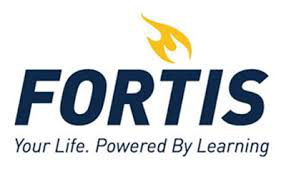Student loans can come from the federal government or from private sources such as a bank or financial institution. Loans made by the federal government usually offer borrowers lower interest rates and have more flexible repayment options than loans from banks or other private sources.
If you decide to take out a student loan, make sure you understand who is making the loan, as well as the terms and conditions of the loan. Review our Federal Student Aid Summary to familiarize yourself with the various options that may be available to you. If you are interested in applying for a federal student loan, you must first submit a Free Application for Federal Student Aid (FAFSA).
Federal Student Loan Programs
The U.S. Department of Education has two federal student loan programs: the William D. Ford Federal Direct Loan Program, and the Federal Perkins Loan Program.
The William D. Ford Federal Direct Loan Program is the largest federal student loan program. Under this program, the U.S. Department of Education is your lender. There are four types of Federal Direct Loans available:
- Direct Subsidized Loans are loans made to eligible undergraduate students who demonstrate financial need to help cover the costs of higher education at a college or career school.
- Direct Unsubsidized Loans are loans made to eligible undergraduate, graduate, and professional students, but in this case, the student does not have to demonstrate financial need to be eligible for the loan.
- Direct PLUS Loans are loans made to graduate or professional students and parents of dependent undergraduate students to help pay for education expenses not covered by other financial aid.
- Direct Consolidation Loans allow you to combine all of your eligible federal student loans into a single loan with a single loan servicer.
Borrowing Limits:
- First-Year Undergrad: $5,500 for Dependent Students (no more than $3,500 can be in subsidized loans)
$9,500 for Independent Students (no more than $3,500 can be in subsidized loans) - Second-Year Undergrad: $6,500 for Dependent students (no more than $4,500 can be in subsidized loans)
$10,500 for Independent Students (no more than $4,500 can be in subsidized loans) - Third-Year and Beyond Undergrad: $7,500 for Dependent students (no more than $5,500 can be in subsidized loans)
$12,500 for Independent Students (no more than $5,500 can be in subsidized loans) - Graduate or Professional Students: $20,000 (unsubsidized only)
NOTE: Interest rates for federal direct subsidized and unsubsidized loans disbursed between July 1, 2013 and June 30, 2014 are at 6.8% for both undergrad and graduate students.
The Federal Perkins Loan Program is a school-based, low-interest loan program for undergraduates and graduate students with exceptional financial need. Under this program, the school is lender. Below is a quick overview of this lending option:
- Available to undergraduate, graduate, and professional students with exceptional financial need.
- Interest rate for this loan is 5%.
- Not all schools participate in the Federal Perkins Loan Program. You should check with your school’s financial aid office to see if your school participates.
- Your school is the lender; you will make your payments to the school that made your loan or your school’s loan servicer.
- Funds depend on your financial need and the availability of funds at your college.
Borrowing Limits:
If you are an undergrad, you may be eligible to receive up to $5,500 a year. The total you can borrow as an undergrad is $27,500. If you are a graduate or professional student, you may be eligible to receive up to $8,000 per year. The total you can borrow as a graduate student is $60,000, which includes amounts borrowed as an undergrad.

